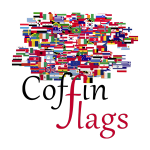Description
 Seychelles, officially the Republic of Seychelles, is an archipelago country in the Indian Ocean. The capital of the 115-island country, Victoria, lies 1,500 kilometres (932 mi) east of mainland East Africa. Seychelles is a member of the African Union, the Southern African Development Community, the Commonwealth of Nations, and the United Nations. After the proclamation of independence from the United Kingdom in 1976, Seychelles has developed from a largely agricultural society to a market-based diversified economy, with agriculture being supplanted by rapidly rising service and public sectors as well as tourism. From 1976 until 2015, nominal GDP output has increased nearly seven-fold and the purchasing power parity nearly sixteen-fold. In the late 2010s, President Danny Faure and the National Assembly presented plans to encourage foreign investment in order to further upgrade these sectors.
Seychelles, officially the Republic of Seychelles, is an archipelago country in the Indian Ocean. The capital of the 115-island country, Victoria, lies 1,500 kilometres (932 mi) east of mainland East Africa. Seychelles is a member of the African Union, the Southern African Development Community, the Commonwealth of Nations, and the United Nations. After the proclamation of independence from the United Kingdom in 1976, Seychelles has developed from a largely agricultural society to a market-based diversified economy, with agriculture being supplanted by rapidly rising service and public sectors as well as tourism. From 1976 until 2015, nominal GDP output has increased nearly seven-fold and the purchasing power parity nearly sixteen-fold. In the late 2010s, President Danny Faure and the National Assembly presented plans to encourage foreign investment in order to further upgrade these sectors.
The flag of Seychelles was adopted on January 8, 1996. The current flag is the third used by the country since its independence from Britain on June 29, 1976. The colours used in the current flag are the official colours of two of the nation’s major political parties–the Seychelles People’s United Party and the Seychelles Democratic Party. The flag consists of five different coloured bands (green, white, red, yellow and blue) starting from one end and diverging towards the other end. The oblique bands symbolise a dynamic new country moving into the future. The colour blue depicts the sky and the sea that surrounds the Seychelles. Yellow is for the sun which gives light and life, red symbolises the people and their determination to work for the future in unity and love, while the white band represents social justice and harmony. The green depicts the land and natural environment.







